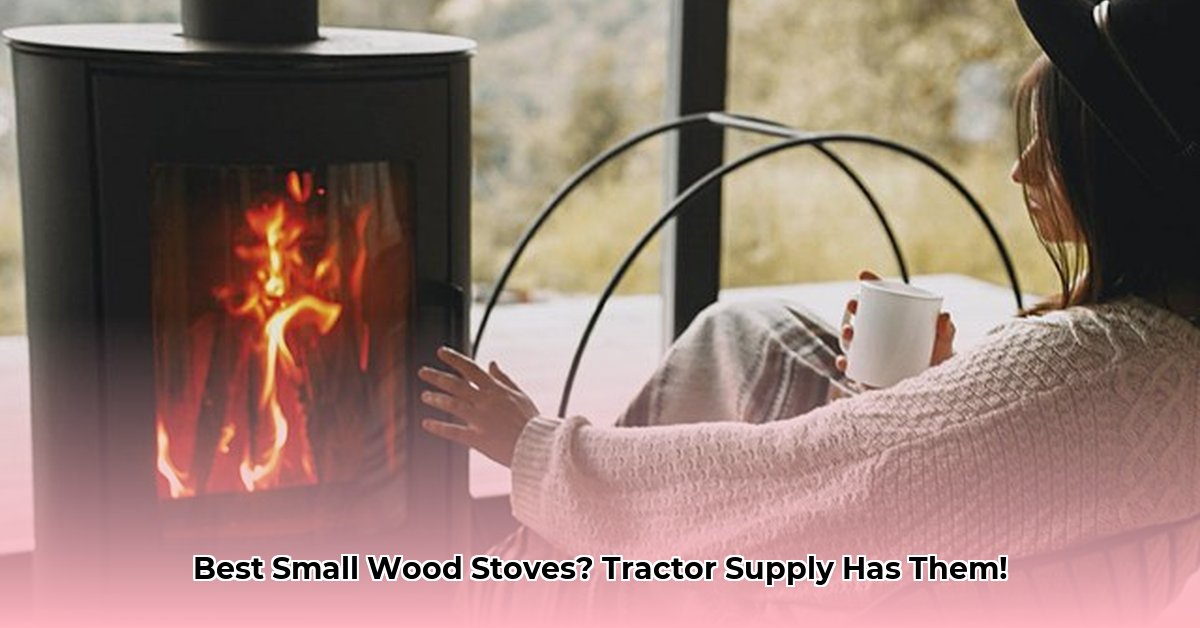
Getting Started: Choosing the Right Small Wood Stove for Your Needs
Thinking about the warmth of a wood stove this winter? Tractor Supply offers a variety of small wood stoves perfect for cabins, workshops, or supplementing home heating. But choosing the right one requires careful consideration. This guide helps you navigate the options and make an informed decision. Don't just focus on the initial price; understanding long-term costs is crucial for a truly budget-friendly solution. A well-chosen stove offers cozy warmth and potential savings, but understanding efficiency and maintenance is key. For more information on Tractor Supply's wood stoves, check out their website.
Assessing Your Heating Needs and Budget
Before browsing Tractor Supply's selection, honestly evaluate your heating requirements. How large is the space you need to heat? A small cabin requires a far smaller stove than a large workshop. How frequently will you use it? Daily use demands a durable, efficient model.
Budget is paramount. While Tractor Supply offers various price points, remember the initial cost is only part of the equation. Include installation (often requiring a professional), ongoing maintenance, and the continuous expense of firewood. Long-term cost analysis is crucial; proper planning avoids unpleasant surprises.
Exploring Tractor Supply's Small Wood Stove Features
Tractor Supply stocks various small wood stoves, each with unique features. Key factors to compare include:
BTU Output (British Thermal Units): This measures the stove's heat output. Higher BTUs heat larger spaces, but remember that actual heat depends on factors like wood moisture content and airflow management.
Efficiency Rating: This indicates how effectively the stove converts wood into usable heat. A higher rating means less wood for the same warmth, saving money. Look for EPA-certified stoves for guaranteed emission standards.
Materials: Cast iron stoves retain heat exceptionally well, but are costlier than steel stoves. Steel stoves are more affordable and lighter but may not radiate heat as long.
Size and Weight: Ensure the stove fits your space and is manageable to move if needed. Consider weight, especially if you plan on moving it yourself.
Your Step-by-Step Guide to Choosing the Perfect Stove
Selecting the right stove is a process, not a rush. Follow these steps for a successful purchase:
Assess Heating Needs: Evaluate the space's size and anticipated usage frequency.
Establish a Realistic Budget: Include initial purchase price, installation (professional or DIY), ongoing maintenance, and the continuous cost of firewood.
Research Tractor Supply's Selection: Explore Tractor Supply's website or visit a store to compare models. Note specifications carefully.
Compare Models: Use the factors above (BTUs, efficiency, materials, size) to compare your top choices.
Consider Installation: Some stoves need professional installation; plan accordingly.
Read Reviews: Consult customer reviews for real-world insights.
Maintaining Your Stove: Safety First
Regular maintenance is crucial for safety and longevity. Creosote buildup (a byproduct of burning wood) is inefficient and a serious fire hazard. Meticulously follow the manufacturer's cleaning and maintenance instructions. Proper ventilation is vital to prevent carbon monoxide poisoning. Never leave a burning stove unattended.
Weighing the Pros and Cons: Small Wood Stoves from Tractor Supply
| Feature | Pros | Cons |
|---|---|---|
| Cost | Potentially cost-effective long-term heating solution | Higher initial investment than some alternatives |
| Efficiency | Efficient models reduce wood consumption | Efficiency varies based on user skill and wood quality |
| Maintenance | Regular maintenance ensures safety and longevity | Requires time and effort |
| Environmental Impact | Can be more environmentally friendly than alternatives | Wood burning contributes to greenhouse gas emissions |
| Aesthetics | Various styles are available | May require modifications for existing fireplace openings |
How to Calculate the Total Lifetime Cost of a Wood Burning Stove
Key Takeaways:
- Firewood is the largest expense. Budget accordingly.
- Regular maintenance (chimney sweeping) is crucial for safety and efficiency.
- Factor in accessory replacements (fans, thermometers).
- Set aside funds for repairs and eventual replacement.
- Include initial purchase and installation costs in your budget.
Before purchasing, understand the total cost of ownership. It’s more than the sticker price. Accurately calculating the lifetime cost helps make an informed decision and avoid unexpected expenses.
Calculating Your Total Lifetime Cost: A Step-by-Step Process
- Initial Costs: Add the stove's price, installation, and permits.
- Annual Costs: Estimate yearly firewood, chimney sweeping, and accessory replacements.
- Long-Term Costs: Estimate repair and replacement costs over the stove's lifespan (10-20 years).
- Total Lifetime Cost: Sum up all costs over the expected lifespan.
Remember, this is an estimate. Your actual costs will vary based on your specific circumstances.
Making the Smart Choice: Your Path to Cozy Winter Warmth
Choosing a small wood stove is a significant decision. Take your time, consider your heating needs, compare Tractor Supply's offerings, and carefully weigh the long-term costs. A well-maintained, efficient wood stove provides affordable warmth, but responsible use and understanding its limitations are essential for safe and effective heating.